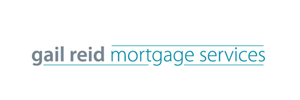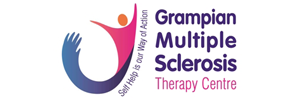
Confused about your Health and Safety responsibilities? We’re here to help. For small or new start-up businesses, you might be…

Outsourced Payroll Simplified Payroll Solutions and Services for UK companies with our low fixed fees, we help keep costs to…

We provide online Health & Safety and HR Compliance courses! These courses now start from £19.99 plus VAT for standard…

Are you managing your GDPR implementation internally but need some support? We offer a GDPR Compliance Pack. This is ideal…

Essential learning solutions for business owners and line managers Our courses are perfect for upskilling individuals, and they can also…
As Pride Month unfolds, it's evident that UK workplaces have been making strides towards inclusivity and diversity. Yet, the distinction between gender identity and sexual orientation remains a challenge for many. This article aims to illuminate these differences, emphasising the significance of creating a truly inclusive work environment during this celebratory month.
Gender Identity refers to an individual's deeply-felt internal experience of gender, which may be different from the sex assigned at birth. It encompasses identities such as male, female, transgender, non-binary, and genderqueer, among others.
Sexual Orientation, on the other hand, describes a person's emotional, romantic, or sexual attraction to others. Common orientations include heterosexual, homosexual, bisexual, and asexual.
Simply put:
Gender Identity: Who you are.
Sexual Orientation: Who you are attracted to.

Uphold the principles of Equality Act 2010 to prevent employment tribunals.
Diversity in Gender Identity: A 2017 survey by the Government Equalities Office found that approximately 13% of respondents identify as transgender or non-binary. This may seem small, but it represents hundreds of thousands of individuals whose experiences and identities need recognition and support.
Sexual Orientation Diversity: According to the Office for National Statistics (ONS), in 2019, around 2.7% of the UK population identified as lesbian, gay, or bisexual. This number has been steadily increasing as more people feel comfortable coming out.
Workplace Discrimination: A study by YouGov in 2018 found that 18% of LGBTQ+ employees experienced workplace discrimination due to their sexual orientation or gender identity. This highlights the ongoing need for education and proactive measures in the workplace.

Create an environment where everyone feels valued, respected, and celebrated.
Understanding the difference between gender identity and sexual orientation is fundamental for promoting an inclusive and respectful workplace. By educating ourselves and others, implementing inclusive policies, and actively supporting LGBTQ+ employees, we can create a work environment where everyone feels valued and respected. Embracing diversity not only complies with legal standards but also enhances employee well-being and organisational success.
Let's continue to strive towards workplaces where all identities are celebrated and everyone can thrive. Share your thoughts below.
First Floor, Office 20,
Balmoral Hub, Building 1,
Balmoral Business Park,
Loriston, AB12 3JG

Copyright © 2022 hrhubplus.com. Registered Office: First Floor, Office 20, Balmoral Hub, Building 1 , Balmoral Business Park, Loriston, Aberdeen, Scotland, AB12 3JG. Registered in Scotland SC584928.
| Cookie | Duration | Description |
|---|---|---|
| cookielawinfo-checkbox-analytics | 11 months | This cookie is set by GDPR Cookie Consent plugin. The cookie is used to store the user consent for the cookies in the category "Analytics". |
| cookielawinfo-checkbox-functional | 11 months | The cookie is set by GDPR cookie consent to record the user consent for the cookies in the category "Functional". |
| cookielawinfo-checkbox-necessary | 11 months | This cookie is set by GDPR Cookie Consent plugin. The cookies is used to store the user consent for the cookies in the category "Necessary". |
| cookielawinfo-checkbox-others | 11 months | This cookie is set by GDPR Cookie Consent plugin. The cookie is used to store the user consent for the cookies in the category "Other. |
| cookielawinfo-checkbox-performance | 11 months | This cookie is set by GDPR Cookie Consent plugin. The cookie is used to store the user consent for the cookies in the category "Performance". |
| viewed_cookie_policy | 11 months | The cookie is set by the GDPR Cookie Consent plugin and is used to store whether or not user has consented to the use of cookies. It does not store any personal data. |












